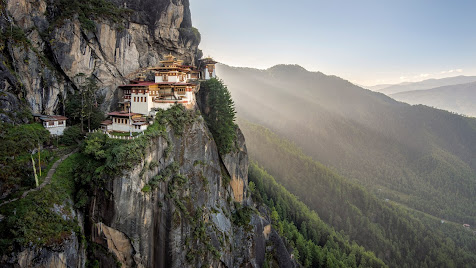Top 3 places to visit in Bhutam
Bhutan, known as the "Land of the Thunder Dragon," offers a unique blend of spiritual serenity, vibrant culture, and natural beauty. Nestled in the eastern Himalayas, this small kingdom has captivated travelers with its well-preserved traditions, stunning landscapes, and deeply rooted Buddhist values. For those seeking to uncover Bhutan’s essence, three destinations stand out – Paro, Thimphu, and Punakha. Each place reflects a different facet of the country, from majestic monasteries perched on cliffs to bustling city life and peaceful river valleys.
Whether you’re stepping off a flight at Bhutan’s sole international airport, exploring the modern yet deeply cultural capital, or soaking in the rural charm of Punakha, these three locations together form the perfect introduction to Bhutan’s past, present, and future. This travel guide will walk you through what makes each destination a must-visit, along with helpful tips to make your journey smooth and fulfilling.
1. Paro – A Gateway to Bhutan’s Rich Heritage
Paro is typically the first stop for international visitors, as it hosts Bhutan’s only international airport. The descent into Paro is an adventure in itself, with planes maneuvering between dramatic mountain ranges before landing in this serene valley town. Just a short drive from the airport lies Paro town, a charming riverside settlement steeped in history and culture.
The town is home to several key landmarks, including the Paro Dzong – a formidable fortress-monastery showcasing traditional Bhutanese architecture – and the National Museum, which offers a deep dive into the country's cultural and natural history. But the most iconic attraction in Paro is undoubtedly Taktshang Goemba, better known as the Tiger’s Nest Monastery. Perched on a cliff 900 meters above the valley floor, it is reached via a scenic 6.4-kilometer (4-mile) hike. The monastery is not only visually stunning but also spiritually significant, believed to be the meditation site of Guru Rinpoche, who brought Buddhism to Bhutan.
In town, take the time to meander through Paro’s quiet streets and stop by the Weekend Market, where local vendors sell everything from handmade souvenirs to Himalayan honey. When hunger strikes, head to Momo Corner – a favorite among visitors – for freshly prepared momo dumplings that capture the essence of Bhutanese cuisine.
2. Thimphu –
Just over an hour’s drive from Paro, Bhutan’s capital Thimphu offers a unique blend of tradition and modernity. As the country's largest city, Thimphu surprises visitors with its mix of urban culture and sacred spaces. Start your exploration at the Bhutan Postal Museum, where you can even design your own postage stamps – a fun and memorable souvenir.
No visit to Thimphu is complete without seeing the Trashi Chho Dzong, an impressive fortress that houses government offices and a monastery. Nearby, the National Memorial Chorten serves as a site of prayer and meditation, drawing locals and tourists alike into its peaceful ambiance.
Despite being a capital city, Thimphu has no traffic lights. Instead, impeccably dressed policemen manually direct traffic – a charming feature that reflects Bhutan’s unique character. As night falls, the city’s cosmopolitan side comes alive. Enjoy live music and conversation over a locally brewed Red Panda beer or a glass of ara (a traditional rice spirit) at popular spots like Mojo Park and the Grey Area, an art bar known for its vibrant atmosphere.
3. Punakha – Bhutan’s Idyllic Countryside
For those looking to experience rural Bhutan at its finest, Punakha is a must-visit. Surrounded by rice paddies and chili fields, the valley is known for its agricultural beauty and temperate climate. The centerpiece of Punakha is its breathtaking dzong, which sits at the confluence of the Mo Chhu and Po Chhu rivers. Often regarded as Bhutan’s most beautiful fortress, the Punakha Dzong is especially enchanting in June and July when jacaranda trees bloom around it in shades of violet and blueThe rivers are not just scenic but also serve as hubs for outdoor activities. One of Bhutan’s largest suspension bridges, adorned with prayer flags, offers sweeping views of the valley and leads to peaceful villages and farms. Adventure-seekers can take to the waters for white-water rafting, a thrilling way to experience the power of Bhutan’s rivers.
Together, Paro, Thimphu, and Punakha represent a beautifully woven tapestry of Bhutanese life. From ancient monasteries and cultural treasures to lively city vibes and tranquil countryside, these three destinations provide travelers with a comprehensive introduction to Bhutan’s soul. Whether you’re captivated by sacred legends, charmed by rural life, or enchanted by mountain landscapes, a journey through these towns is sure to leave a lasting impression. Bhutan may be small, but within its valleys lies a world of discovery waiting for those ready to explore.



.jpg)
Comments
Post a Comment